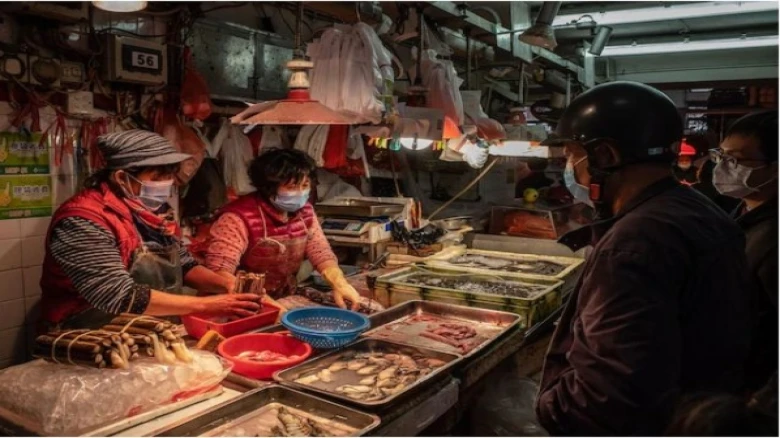National

Digital Desk: Once more, strong evidence has surfaced to support the
claims that the Covid-19 pandemic, which has so far claimed more than 6 million
lives, originated in Wuhan's Huanan seafood and wildlife market.
The Huanan Seafood Market in Wuhan was probably the coronavirus's epicentre,
according to two peer-reviewed studies that were published in the journal
"Science." The papers use different methodologies to reach the same
conclusion.
The initial
investigation reveals that the Wuhan market was the centre of the early
recorded cases.
While early COVID-19
instances appeared all around Wuhan, the bulk gathered in the city's centre
near the Yangtze River's west bank, with a large concentration of cases in and
around the Huanan market, according to a study published in the journal Science
and available online.
The title of the
report is "The Wuhan Huanan Seafood Wholesale Market was the early
COVID-19 pandemic epicentre."
In contrast to
SARS-CoV-2 positive environmental samples, we discovered that COVID-19 cases
were more diffuse throughout the building. "All eight COVID-19 cases
detected prior to 20 December were from the western side of the market, where
mammal species were also sold," the study in journal Science adds.
The second study
implies that two variations were introduced into people in late November or
early December 2019 and uses genetic data to track the time frame of the COVID
outbreak.
The peer-reviewed
study, "The molecular epidemiology of various zoophytic origins of
SARS-CoV-2," which was published in the journal Science and was quoted by
CNN, uses a molecular technique to try and pinpoint when the first coronavirus
infections spread from animals to people.
The first
animal-to-human transfer likely occurred around November 18, 2019, and it
originated from lineage B, according to the study. The lineage B type was only
discovered by the researchers in individuals with a clear link to the
Hunan market.
As with other coronaviruses, SARS-CoV-2 emergence likely resulted from
multiple zoophytic events, the study said. "These findings indicate that it
is unlikely that SARS-CoV-2 circulated widely in humans prior to November 2019
and define the narrow window between when SARS-CoV-2 first jumped into humans
and when the first cases of COVID-19 were reported."
Despite following different paths, both studies come to the conclusion
that Sars-Cov-2 was present in live mammals sold at the Huanan market in late
2019. According to the two studies, the virus was spread to people working or
shopping there in two separate "spillover events," where a human
contracted the virus from an animal.
Leave A Comment